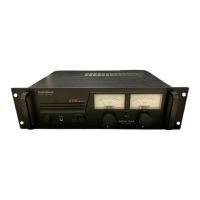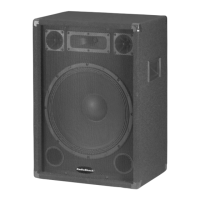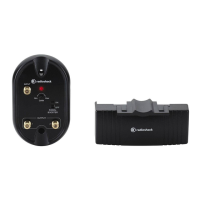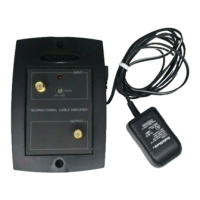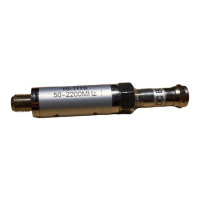10
Speakers
4. To determine the total impedance of
speakers connected in serial and
parallel combined, divide the imped-
ance of one pair of speakers by the
number of pairs.
For example, if you want to connect
four 8-ohm speakers in serial and
parallel combined, divide 16 (the
impedance of one pair of speakers)
by 2 (the number of speaker pairs)
for a total speaker impedance of 8
ohms.
5. Connect the negative (–) terminals
of all pairs of speakers to the ampli-
fier’s
COM terminal.
6. Connect the positive (+) terminals of
all pairs of speakers to the ampli-
fier’s terminal that matches the total
speaker impedance (
8Ω
ΩΩ
Ω, in this
example).
Multiple Speakers with
Transformers
For complex multiple-speaker arrange-
ments that require many speakers and
long runs of connecting wire, we recom-
mend you use a line transformer (not
supplied).
Note:
When running lengths of wire
longer than 50 feet, use wire that is
heavier than 16 gauge.
There are several advantages to using
transformers.
• You can connect speakers with dif-
ferent impedances without causing
differences in output between the
speakers.
• You can add or remove a speaker
without having to recalculate the
entire system’s impedance.
• You can reduce signal loss when
you use speaker wire over 50 feet
long.
You need a separate transformer for
each speaker.
Line transformers have several connec-
tors called taps.
The primary taps (on one side of the
transformer) are the inputs and are rated
in watts. The secondary taps (on the op-
posite side of the transformer) are the
outputs and are rated in ohms.
Taps
Primary
Taps
Secondary
Taps
32-2002.fm Page 10 Friday, February 11, 2000 11:36 AM
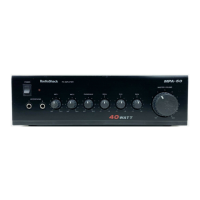
